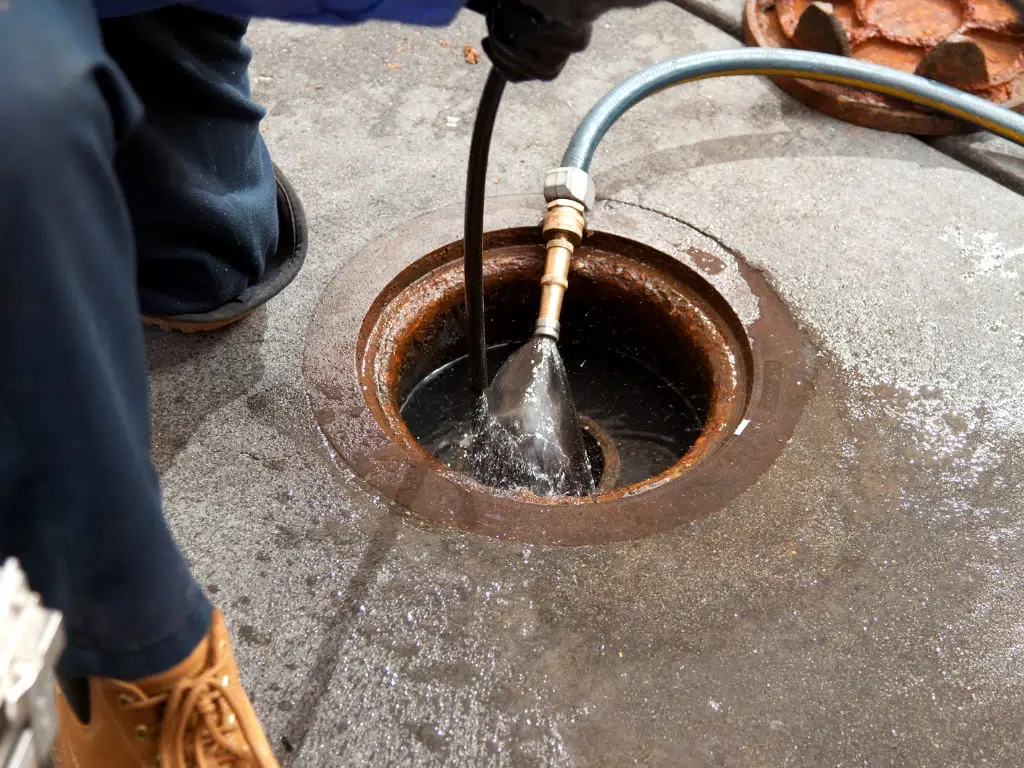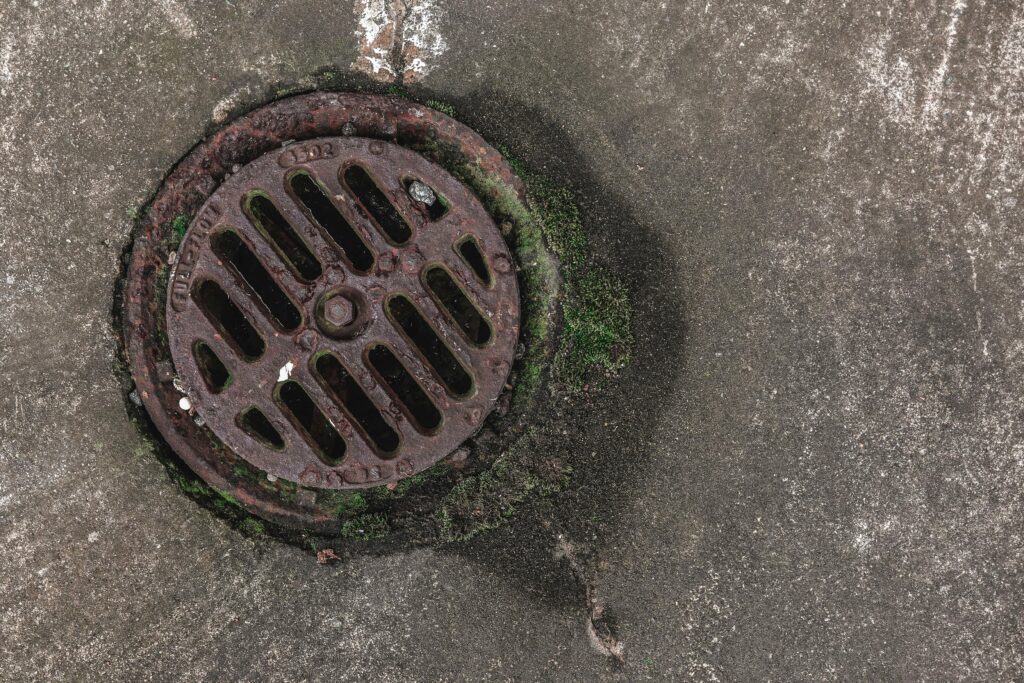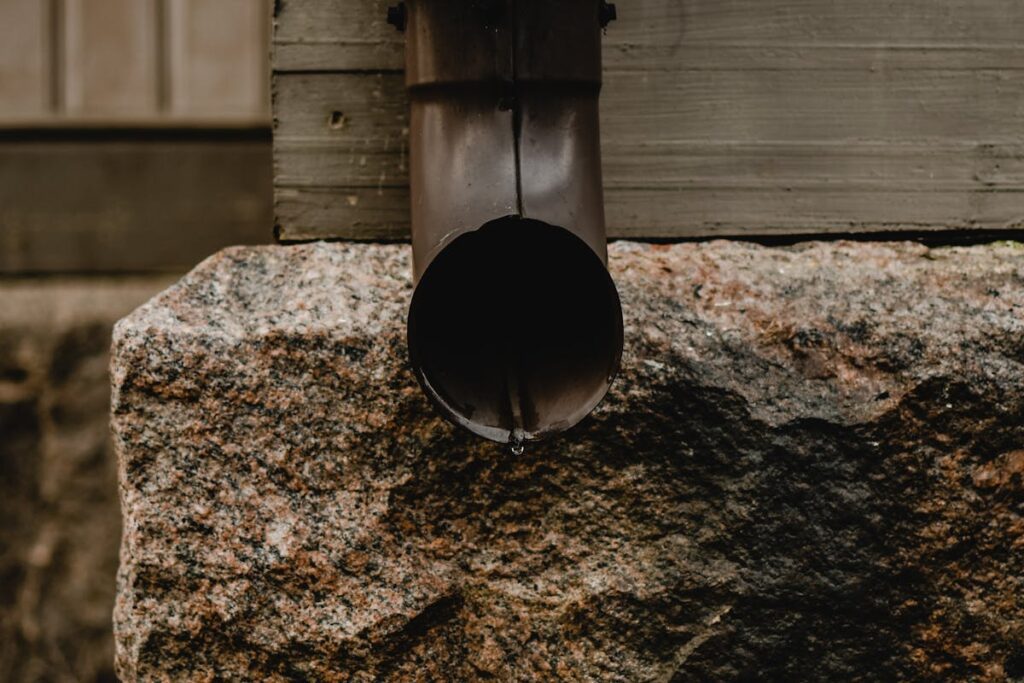When heavy rain hits, the last thing any homeowner wants to deal with is pooling water or a flooded basement. At Ware Landscaping, we’ve seen firsthand how excess moisture can damage foundations, ruin landscaping, and lead to expensive repairs. Two of the most reliable solutions for managing water drainage are French drains and curtain drains. While they might sound similar, they serve different purposes—and choosing the right one can make all the difference.
What Is a French Drain?
A French drain is a deep, underground drainage system designed to move groundwater away from areas where it tends to collect. Invented by Henry Flagg French in 1859, it consists of a sloped trench filled with gravel and a perforated pipe that channels water toward a safe discharge point, such as a storm drain or dry well.
When water seeps into the ground, it enters the gravel-filled trench, passes through the holes in the pipe, and then flows downhill by gravity. This system is especially effective for basement flooding, yard saturation, or high groundwater levels. Essentially, if water is seeping up from the ground rather than flowing across the surface, a French drain is your best bet.
What Is a Curtain Drain?
A curtain drain is sometimes called a shallow French drain, but it serves a different function. Instead of controlling groundwater, it’s designed to intercept surface water runoff before it can reach your home, driveway, or garden. It’s installed closer to the surface (usually 12 to 24 inches deep) and works well for sloped properties where water runs downhill.
The setup is similar—a trench, gravel, and sometimes a perforated pipe—but the goal is to catch rainwater and runoff before it saturates the soil. Curtain drains are ideal for protecting foundations or preventing erosion on hillsides.
Key Differences Between French and Curtain Drains
While both systems use similar materials and rely on gravity to move water, their depth and purpose set them apart:
| Feature | French Drain | Curtain Drain |
|---|---|---|
| Primary Function | Divert groundwater | Capture surface runoff |
| Typical Depth | 18-24 inches or deeper | 12-24 inches |
| Best For | Basement flooding, soggy yards | Slopes, driveways, erosion control |
| Installation Cost | $40–$100 per linear foot (interior systems) | $10–$25 per linear foot |
| Maintenance Needs | Moderate (can clog over time) | Low (easier access) |
| Lifespan | 10–40 years | 10–30 years |
How Each System Works
Both French and curtain drains rely on gravity and permeability to channel water away from problem areas. Here’s how:
- French Drains: Water seeps through the soil and enters the gravel layer surrounding the perforated pipe. The pipe collects and redirects the water toward a lower discharge point. Because they’re installed deep in the ground, French drains handle large volumes of groundwater and are essential in regions with heavy rainfall or flat terrain.
- Curtain Drains: These sit closer to the surface. As rainwater runs down a slope, it’s intercepted by the trench before reaching structures or pooling in low spots. The water then flows through gravel or into a pipe that carries it safely away.
In many cases, properties benefit from both systems—a curtain drain to handle surface water and a French drain deeper down to manage groundwater.
Installation Overview
Installing a drainage system properly is crucial for long-term performance. Here’s what a professional installation typically looks like:
For a French Drain:
- Survey the area to find the natural slope and water flow pattern.
- Dig a trench about 18–24 inches deep (sometimes deeper for basements).
- Line the trench with geotextile fabric to prevent soil from clogging the gravel.
- Add a few inches of gravel, lay the perforated pipe (holes facing down), and fill with more gravel.
- Wrap the fabric over the top and backfill with soil or sod for a clean finish.
For a Curtain Drain:
- Identify the slope and location where surface water collects.
- Excavate a shallower trench—typically 12–24 inches deep.
- Line with fabric, fill partially with gravel, and optionally install a perforated pipe.
- Add more gravel and cover with soil, grass, or decorative rock.
Professional installation ensures proper slope (at least 1% grade) and safe discharge points. Poor installation can cause stagnation or even worsen flooding.
Pros and Cons
Let’s take a balanced look at what each system offers.
French Drain Pros:
- Excellent for deep water problems.
- Long lifespan with proper maintenance.
- Hidden underground—no aesthetic impact.
French Drain Cons:
- More expensive to install.
- Can clog from soil, debris, or roots.
- Requires professional expertise for deep installations.
Curtain Drain Pros:
- Easier and cheaper to install.
- Minimal maintenance.
- Great for sloped properties and preventing erosion.
Curtain Drain Cons:
- Less effective for deep groundwater issues.
- Can overflow during extreme rainfall.
- May be partially visible if not landscaped properly.
Maintenance and Longevity
Both drains are designed to be low-maintenance, but they still benefit from routine checks—especially after heavy rain. Look out for standing water, soggy spots, or slow drainage, which may indicate a clog or collapse. French drains can be snaked or flushed periodically to extend their life.
Curtain drains, being shallower, are easier to inspect and maintain. However, both types should last 10–30 years or more when installed correctly with quality materials.
Cost Breakdown
Costs depend on soil type, trench length, and location. Here’s a general guide:
- French drain: $2,800–$6,500 for 100 linear feet (higher if installed indoors)
- Curtain drain: $1,000–$2,500 for 100 linear feet
At Ware Landscaping, we evaluate factors like slope, soil permeability, and water source before recommending the most cost-effective solution.
Which One Should You Choose?
If your basement floods regularly or your yard stays soggy for days after rain, a French drain is likely the right choice. It tackles the root of the problem—literally, the groundwater. However, if you’re dealing with water flowing across the surface, washing away mulch, or pooling near your driveway, a curtain drain offers a simpler, budget-friendly fix.
In some complex cases, combining both systems ensures complete protection. For example, a curtain drain installed upslope can divert surface water before it reaches the foundation, while a French drain below prevents groundwater buildup.
Final Thoughts
No two properties are exactly alike, and drainage problems rarely have one-size-fits-all solutions. The key is understanding where your water is coming from—surface runoff or underground seepage—and addressing it at the right depth.
At Ware Landscaping, we specialize in diagnosing and installing custom drainage systems that protect your home, yard, and foundation from water damage. Whether it’s a French drain for serious groundwater issues or a curtain drain for surface control, our experts ensure your system is built to last.
Need help deciding which drain is best for your property? Contact Ware Landscaping today for a professional drainage assessment and long-term water management plan.








